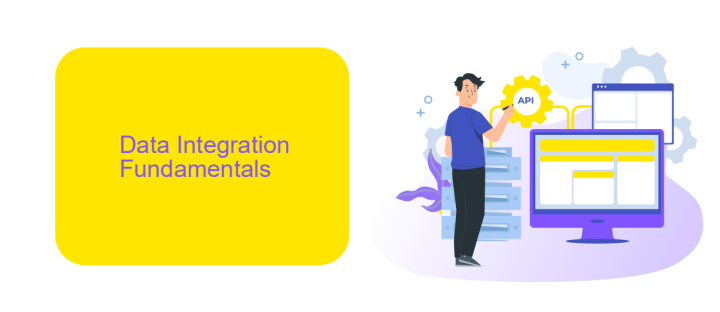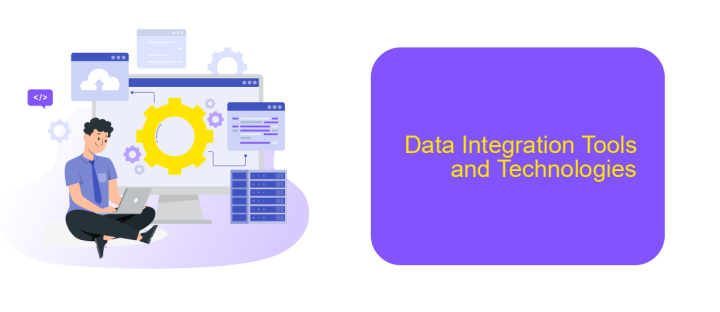Principles of Data Integration
Data integration is a critical process in modern data management, enabling the consolidation of information from diverse sources into a unified view. This practice is essential for businesses seeking to enhance decision-making, improve data quality, and streamline operations. In this article, we will explore the fundamental principles of data integration, including data consistency, accuracy, and accessibility, to understand its significance and implementation.
Introduction
Data integration is a critical aspect of modern data management, enabling organizations to combine data from disparate sources into a unified view. This process not only enhances decision-making but also improves operational efficiency and data quality. With the increasing volume and variety of data, effective data integration has become more challenging yet more essential.
- Combining data from multiple sources
- Ensuring data consistency and accuracy
- Facilitating real-time data access
- Improving data governance and compliance
One of the tools that streamline data integration is ApiX-Drive, a service that automates data transfer between various platforms. By leveraging such services, organizations can reduce manual efforts, minimize errors, and ensure timely data availability. Effective data integration practices are indispensable for businesses aiming to harness the full potential of their data assets.
Data Integration Fundamentals

Data integration is the process of combining data from different sources to provide a unified view. This practice is essential for businesses as it enables more comprehensive data analysis, leading to better decision-making. The fundamentals of data integration include data extraction, data transformation, and data loading (ETL). These steps ensure that data is accurately and efficiently consolidated from various sources, such as databases, cloud services, and applications.
Modern data integration also involves the use of automated tools and platforms to streamline the process. For example, ApiX-Drive is a service that facilitates seamless data integration by allowing users to connect various applications and automate data workflows without requiring extensive technical knowledge. By leveraging such tools, organizations can reduce manual effort, minimize errors, and enhance the overall efficiency of their data management practices. This approach not only saves time but also ensures that data is consistently up-to-date and readily available for analysis.
Data Integration Architecture

Data integration architecture is a framework that defines the methods and tools used to combine data from different sources into a unified view. This architecture ensures seamless data flow and consistency across various platforms and applications, enabling organizations to make informed decisions based on comprehensive data insights.
- Data Sources: Identify and catalog all data sources including databases, APIs, and file systems.
- Data Extraction: Utilize ETL (Extract, Transform, Load) tools to extract data from various sources.
- Data Transformation: Cleanse and transform data to ensure compatibility and quality.
- Data Loading: Load the transformed data into a centralized data warehouse or data lake.
- Data Access: Provide secure access to integrated data for analytics and reporting.
Tools like ApiX-Drive can simplify the integration process by providing automated workflows that connect different applications without requiring extensive coding. By leveraging such services, organizations can streamline data integration, reduce manual efforts, and ensure data accuracy and consistency across their systems.
Data Integration Tools and Technologies

Data integration tools and technologies play a crucial role in ensuring seamless data flow between diverse systems and applications. These tools help organizations consolidate data from multiple sources, enabling comprehensive analysis and decision-making.
Modern data integration platforms offer a range of features designed to simplify the integration process, from data extraction to transformation and loading (ETL). These platforms often support real-time data integration, ensuring that data is always up-to-date and accurate.
- ETL Tools: Extract, Transform, Load tools like Apache Nifi and Talend streamline data migration and integration.
- API Integration Platforms: Services like ApiX-Drive facilitate the connection between various applications through APIs, making it easier to automate workflows.
- Data Virtualization: Tools like Denodo allow users to access and manipulate data without needing to know its physical location.
- Cloud Integration: Platforms such as Microsoft Azure Data Factory enable the integration of on-premises and cloud data sources.
Choosing the right data integration tool depends on the specific needs and infrastructure of an organization. It's essential to evaluate the scalability, compatibility, and ease of use of each tool to ensure it aligns with business goals. For instance, ApiX-Drive can be particularly useful for automating data workflows between various applications, enhancing operational efficiency.
- Automate the work of an online store or landing
- Empower through integration
- Don't spend money on programmers and integrators
- Save time by automating routine tasks
Conclusion
In conclusion, the principles of data integration are fundamental to achieving seamless and efficient data management across different systems. By adhering to best practices such as ensuring data consistency, maintaining data quality, and implementing robust security measures, organizations can streamline their operations and make informed decisions. The integration process should be carefully planned and executed to avoid common pitfalls and ensure that data flows smoothly between systems.
Utilizing advanced tools and services like ApiX-Drive can significantly simplify the integration process. ApiX-Drive offers a user-friendly platform that allows businesses to connect various applications and automate data workflows without the need for extensive coding knowledge. This not only saves time and resources but also enhances the overall efficiency of data management. As businesses continue to evolve, embracing the principles of data integration and leveraging modern integration services will be crucial for sustaining growth and competitiveness in the digital age.
FAQ
What is data integration?
Why is data integration important?
What are some common challenges in data integration?
How can automation help in data integration?
What are the key principles of effective data integration?
Time is the most valuable resource for business today. Almost half of it is wasted on routine tasks. Your employees are constantly forced to perform monotonous tasks that are difficult to classify as important and specialized. You can leave everything as it is by hiring additional employees, or you can automate most of the business processes using the ApiX-Drive online connector to get rid of unnecessary time and money expenses once and for all. The choice is yours!


